ESCAPE TO TITAN
All About Space
|Issue 108
When the Sun scorches Earth, a tiny moon in orbit around the ringed giant Saturn is our next home

Our planet may have survived for 4.5 billion years, but humanity faces some major threats. There’s always the possibility that an asteroid will wipe us out, just as one did for the dinosaurs some 65 million years ago. We could be engulfed by a gamma-ray burst or disrupted by a wandering star. There are also dangers closer to home, from volcanoes to nuclear war. Even supposing humans manage to survive all these threats, we can still say for certain that life here on Earth will eventually be no more. In around 5 billion years from now the Sun will undergo a massive change that will fundamentally alter our Solar System. It will cause the end of not only all life here on Earth, but possibly the entire planet, and we will have no choice other than to find somewhere else to live.
Astronomers have been looking at the possibilities of colonising other planets for years. Mars currently tops the list of destinations, with NASA working hard to develop the capabilities needed to send humans to the Red Planet in the 2030s. Yet some scientists are taking a much longer view. Rather than looking towards the terrestrial planets for our new home, they say humans will one day have to relocate to the outer Solar System if they want to survive. As it currently stands, sending scores of humans to live beyond the asteroid belt is out of the question. The four gas giants are utterly unsuitable for life, and the moons of the outer Solar System are well outside of the habitable zone – the region around the Sun where the atmospheric pressure is able to support liquid water, making conditions for life as we know it ‘just right’.
This story is from the Issue 108 edition of All About Space.
Subscribe to Magzter GOLD to access thousands of curated premium stories, and 10,000+ magazines and newspapers.
Already a subscriber? Sign In
MORE STORIES FROM All About Space

All About Space UK
MYSTERIES OF THE UNI WHERE ARE ALL THE SPIRAL GALAXIES?
There are far fewer spiral galaxies than elliptical ones in the Supergalactic Plane, and scientists are keen to discover why
7 mins
Issue 161
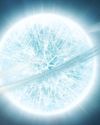
All About Space UK
ZOMBIE STARS
+10 OTHER TERRIFYING SPACE OBJECTS
8 mins
Issue 161

All About Space UK
HOW TO BEAT LIGHT POLLUTION
Thought it was impossible to observe the wonders of the night sky from towns and cities? Think again. Follow our tips and tricks on successfully observing through sky glow
2 mins
Issue 161
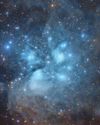
All About Space UK
15 STUNNING STAR CLUSTERS
These beautiful stellar groupings are spattered across the cosmos
8 mins
Issue 161

All About Space UK
Eileen Collins "It was a difficult mission...we were the first to see Mir"
Having served as both the first female pilot and first female commander of NASA's Space Shuttle, Collins boosted the involvement of women in space exploration to a whole new level
9 mins
Issue 161
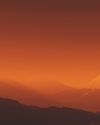
All About Space UK
MARS LEAKS FASTER WHEN IT'S CLOSER TO THE SUN
The Red Planet has lost enough water to space to form a global ocean hundreds of kilometres deep
2 mins
Issue 161
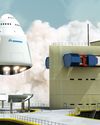
All About Space UK
FUTURE TECH KANKOH-MARU
This ambitious reusable spacecraft will be capable of taking 50 people to and from orbit
2 mins
Issue 161

All About Space UK
THE FINAL FRONTIER
Beyond the reach of the Sun is a fascinating region of the cosmos that were only just beginning to explore
8 mins
Issue 161
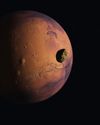
All About Space UK
A long-lost moon could explain Mars' weird shape and extreme terrain
A long-lost moon could explain why Mars is so different from the other rocky planets in the Solar System. Today Mars has two tiny moons.
2 mins
Issue 161
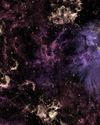
All About Space UK
A sprinkling of cosmic dust may have helped kick-start life on Earth
Cosmic dust may have helped kick-start life on Earth. New findings challenge a widely held assumption that this wasn't a plausible explanation.
3 mins
Issue 161
Translate
Change font size

